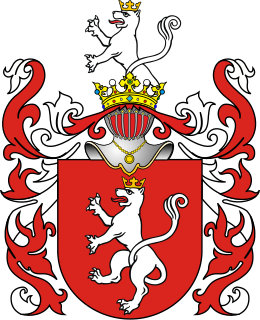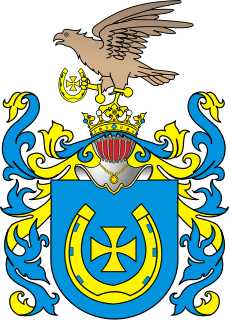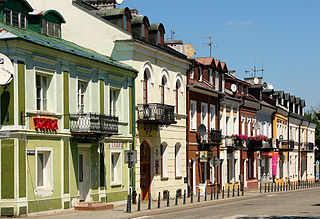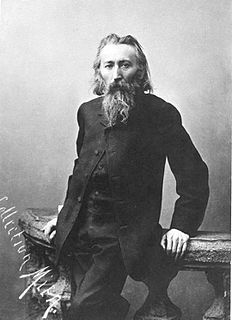
Poraj is a Polish Coat of Arms. Used by several knighthood families of medieval Poland and noble families of the Polish-Lithuanian Commonwealth - those descended in the male-line from the Poraj family and those allowed into the heraldic clan by adoption.

Krzysztof Szydłowiecki (1467–1532) was a Polish noble (szlachcic), magnate, Count of Szydłowiec.

Zamojski is the name of an important Polish noble (szlachta) family, which used the Jelita coat of arms. The family's name is sometimes spelled Zamoyski. It is the Polish term for "de Zamość", the name they originally held as lords of Zamość. The family was influential in Polish politics for several centuries, and its members held various official titles, including those of Count and Countess.

Potocki was one of the prominent Polish noble families in the Kingdom of Poland and magnates of the Polish-Lithuanian Commonwealth. The Potocki family is one of the wealthiest and most powerful aristocratic families that still exist in Poland.

Mikołaj Zebrzydowski (1553–1620) of Radwan coat of arms, voivode of Lublin from 1589, Grand Crown Marshal 1596–1600, voivode of Kraków from 1601. He is famous for an armed rebellion against King Sigismund III Vasa, the Zebrzydowski Rebellion, a rokosz named after himself. It took place in 1606, and was defeated by 1607. After the failed rebellion, he sponsored the creation of the Roman Catholic monastery of Kalwaria Zebrzydowska, which is regarded as one of the most important pilgrimage sites of Poland.

Tarnowski is the surname of a Polish noble and aristocratic family. Because Polish adjectives have different forms for the genders, Tarnowska is the form for a female family member.

Mikołaj Firlej was a Polish nobleman (szlachcic), hetman, diplomat, and expert of southeast Europe.
Jan Tęczyński may refer to:
Voivodes of the Polish–Lithuanian Commonwealth were one of the highest ranking officials who could sit in the Senate of Poland. They were the officials in charge of the voivodeships (provinces/palatinates) of the Polish–Lithuanian Commonwealth. The office first appears as Palatine (Palatinus) who was the first person after the King. As Poland broke into separate principalities each Prince had his court and his own Palatine. When the Kingdom was (partially) reunited the Palatines became heads of the former Principalities now turned into Palatinates. As such they were members of the King's council. The title got merged with the Polish Wojewoda. The difference between Wojewoda and Herzog is that Herzog, after being a rank appointed by the Monarch became a hereditary title of honour, while Wojewoda remained appointed for life and continued as a real-power position before it also lost meaning to the Starostas. Polish historians still use Palatyn and Wojewoda as synonyms.

Firlej was a Polish szlachta (nobility) family. Magnates in the 15th and 17th century.

Kraków Voivodeship 1300–1795 – a unit of administrative division and local government in the Kingdom of Poland from the 14th century to the partitions of Poland in 1772–1795. Located in the southwestern corner of the country, it was part of the Little Poland province.

Tęczyński was a powerful family of nobility (szlachta) in the Kingdom of Poland, during the times of the late Piast dynasty, the Jagiellon dynasty and in the early decades of the Polish-Lithuanian Commonwealth. They were an important family from Lesser Poland (Małopolska), active in Polish politics of their time.

Lanckoroński is a surname of Polish nobility. The Lanckoroński family was based in Kraków and Sandomierz, and representatives of the family held power and influence in the Kingdom of Poland from the times of the late Piast dynasty to the end of the Polish-Lithuanian Commonwealth. The family used the Zadora coat of arms.

Zborowski of the Jastrzębiec coat of arms was a Polish noble family from Greater Poland, It played a significant role in Polish politics in the 16th century.

Piotr Kmita Sobieński, Piotr Kmita Sobiński of the Kmita (Kmitowie) noble family, Count of Wiśnicz, Szreniawa, was Grand Marshal of the Crown from 1529 onwards, voivode and starosta of Kraków, starosta of Spiš, starosta of Przemyśl, starosta of Koleński, Castellan of Sandomierz, one of the richest and most influential persons in contemporary Poland. He was the heir of 28 villages, including Wiśnicz, Sobienia and many royal estates, among others, Lipnica Murowana.

Tarło was a Polish magnate (szlachta) family. The seats of the family in the 16th century were, among others: Laszki Murowane near Chyrów, Sambor, Dębowiec near Jasło, Samoklęski and Potok near Krosno.
Dobiesław Oleśnicki was a soldier, aristocrat and politician in 15th century Poland.

John Gabriel Tęczyński Chamberlain (1515) and voivode of Sandomierz (1543), Castellan (1518) and the governor of Lublin, the Speaker of the court of the Crown (1522), Castellan of Wojnicki (1535), Count of the Holy Roman Empire (1527).






















